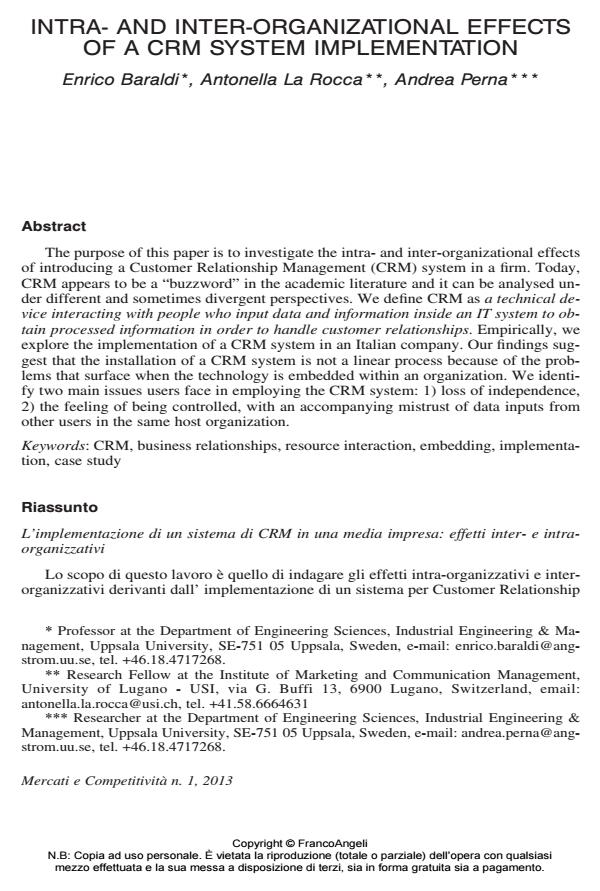Intra- and inter-organizational effects of a CRM system implementation
Journal title MERCATI E COMPETITIVITÀ
Author/s Enrico Baraldi, Antonella La Rocca, Andrea Perna
Publishing Year 2013 Issue 2013/1
Language English Pages 22 P. 13-34 File size 1559 KB
DOI 10.3280/MC2013-001003
DOI is like a bar code for intellectual property: to have more infomation
click here
Below, you can see the article first page
If you want to buy this article in PDF format, you can do it, following the instructions to buy download credits

FrancoAngeli is member of Publishers International Linking Association, Inc (PILA), a not-for-profit association which run the CrossRef service enabling links to and from online scholarly content.
The purpose of this paper is to investigate the intra- and inter-organizational effects of introducing a Customer Relationship Management (CRM) system in a firm. Today, CRM appears to be a "buzzword" in the academic literature and it can be analysed under different and sometimes divergent perspectives. We define CRM as a technical device interacting with people who input data and information inside an IT system to obtain processed information in order to handle customer relationships. Empirically, we explore the implementation of a CRM system in an Italian company. Our findings suggest that the installation of a CRM system is not a linear process because of the problems that surface when the technology is embedded within an organization. We identify two main issues users face in employing the CRM system: 1) loss of independence, 2) the feeling of being controlled, with an accompanying mistrust of data inputs from other users in the same host organization.
Keywords: CRM, business relationships, resource interaction, embedding, implementation, case study
Enrico Baraldi, Antonella La Rocca, Andrea Perna, Intra- and inter-organizational effects of a CRM system implementation in "MERCATI E COMPETITIVITÀ" 1/2013, pp 13-34, DOI: 10.3280/MC2013-001003